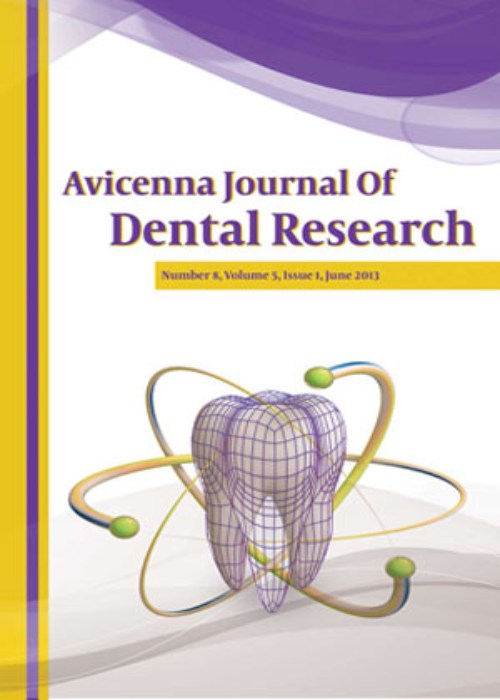Clinical and Radiographic Assessment of Peri-Implant Tissue in Posterior Areas with and Without the Need for Guided Bone Regeneration
Author(s):
Abstract:
Background
Dental implants are increasingly used in resorbed alveolar ridges, and the success of implants inserted concomitantly with guided bone regeneration (GBR) needs to be evaluated.Objectives
This study aimed to clinically and radiographically assess the peri-implant tissues in the posterior maxilla and mandible in cases in which dehiscence or fenestration occurred at the time of implant surgery and treated with GBR (simultaneously with implant placement in one session). A comparison was also made between the above-mentioned patients and controls in which implants were placed in intact bone (entire length of implant in bone).Patients and
Methods
This study was conducted on 12 patients as cases who received 17 standard implants (dehiscence or fenestration occurred after placement of 4 mm diameter standard implants and GBR was performed) and 10 patients as the control group (those who received 17 standard implants, 4 mm in diameter and 10 mm in length, in adequate bone). Periapical (PA) radiographs were obtained in the first 24 hours post-surgery. Radiographs were repeated at one month, at the time of loading (two months post-surgery), and at three and six months after loading to assess marginal bone loss. To assess the peri-implant soft tissue, thickness and width of the keratinized gingiva were evaluated. Data were analyzed using t-test and repeated measures analysis of variance. The level of significance was set to P = 0.05.Results
The difference in distance from the bone crest to the implant shoulder between the two groups of cases and controls was significant at the following time points: baseline and 2 months post-surgery (P = 0.000), baseline and 6 months after loading (P = 0.01), 2 months post-surgery and 3 months after loading (P = 0.00), and 2 months post-surgery and 6 months after loading (P = 0.00). Changes in the width of the keratinized gingiva were not significant in the two groups of cases and controls at 2 months post-surgery (P = 0.87) or at 6 months after loading compared with the baseline preoperative values (P = 0.47). Changes in the thickness of the keratinized gingiva were not significant in the case or control group at 2 months post-surgery (P = 0.97) or at 6 months after loading compared with the baseline preoperative values (P = 0.25).Conclusions
Changes in the marginal bone level were greater when implants were placed concomitantly with GBR. No significant difference was noted in terms of changes in width or thickness of the keratinized gingiva between the two groups. Keywords:
Language:
English
Published:
Avicenna Journal of Dental Research, Volume:9 Issue: 1, Mar 2017
Page:
6
magiran.com/p1702454
دانلود و مطالعه متن این مقاله با یکی از روشهای زیر امکان پذیر است:
اشتراک شخصی
با عضویت و پرداخت آنلاین حق اشتراک یکساله به مبلغ 1,390,000ريال میتوانید 70 عنوان مطلب دانلود کنید!
اشتراک سازمانی
به کتابخانه دانشگاه یا محل کار خود پیشنهاد کنید تا اشتراک سازمانی این پایگاه را برای دسترسی نامحدود همه کاربران به متن مطالب تهیه نمایند!
توجه!
- حق عضویت دریافتی صرف حمایت از نشریات عضو و نگهداری، تکمیل و توسعه مگیران میشود.
- پرداخت حق اشتراک و دانلود مقالات اجازه بازنشر آن در سایر رسانههای چاپی و دیجیتال را به کاربر نمیدهد.
In order to view content subscription is required
Personal subscription
Subscribe magiran.com for 70 € euros via PayPal and download 70 articles during a year.
Organization subscription
Please contact us to subscribe your university or library for unlimited access!


